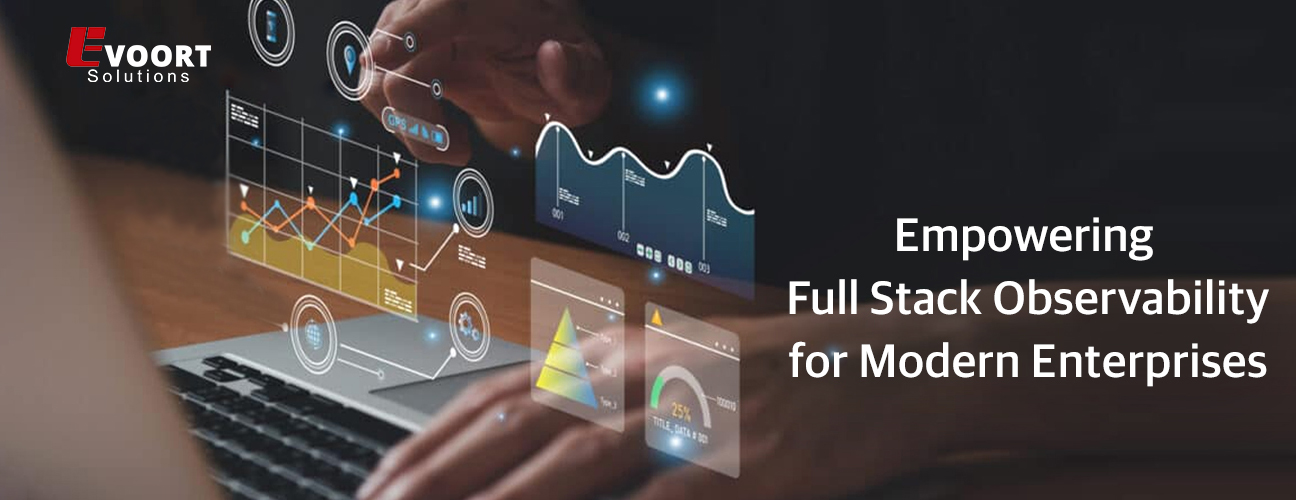
Empowering Full Stack Observability for Modern Enterprises
Table of Contents
In the realm of modern software development and operations, achieving reliable performance and maintaining robust systems is paramount. To meet these demands, the concept of observability has emerged as a fundamental practice. While traditional monitoring focuses on metrics and alerts, full stack observability delves deeper into understanding complex systems by providing insights into every layer of the technology stack. In this comprehensive guide, we'll explore what full-stack observability is, why it's crucial, and how to implement it effectively.
What is Full Stack Observability?
Full stack observability is the capability to understand, analyze, and troubleshoot a system comprehensively across its entire stack, encompassing applications, infrastructure, networks, and services. Unlike traditional monitoring, which typically provides isolated insights into specific components, full stack observability aims to offer a holistic view of system behavior and performance in real time.
Key Components of Full Stack Observability:
Metrics: These are quantitative measurements that provide insights into the health and performance of various components within the system. Metrics can include CPU usage, memory utilization, request latency, and more.
Logs: Logs provide detailed records of events and activities occurring within the system. They are invaluable for troubleshooting issues, tracing transactions, and understanding the sequence of events during an incident.
Traces: Traces allow developers and operators to follow the path of a request as it traverses through different services and components. This is particularly important in distributed systems where a single request may touch multiple microservices.
Distributed Tracing: This is an extension of tracing that enables end-to-end visibility into complex, distributed architectures. It helps identify bottlenecks, latency issues, and dependencies across services.
Anomalies Detection: Full stack observability involves the use of AI and machine learning algorithms to detect abnormal patterns or behavior within the system. This proactive approach helps in identifying issues before they escalate into major incidents.
Why Full Stack Observability Matters:
Faster Problem Resolution: With full stack observability, teams can quickly identify and troubleshoot issues, minimizing downtime and improving user experience.
Improved Collaboration: By providing a unified view of the system, full stack observability encourages collaboration between development, operations, and other teams involved in maintaining the system.
Better Decision Making: Access to comprehensive data allows organizations to make informed decisions regarding capacity planning, resource allocation, and infrastructure optimization.
Enhanced Customer Experience: By proactively monitoring and optimizing system performance, organizations can ensure a seamless and reliable experience for their customers.
Implementing Full Stack Observability:
Choose the Right Tools: Invest in tools and platforms that offer comprehensive monitoring, logging, and tracing capabilities across your entire stack.
Instrumentation: Instrument your applications, services, and infrastructure to collect relevant metrics, logs, and traces. Use standardized formats and protocols for better interoperability.
Centralized Logging and Monitoring: Establish a centralized repository for logs and metrics to facilitate easy access and analysis. This could be achieved through tools like Elasticsearch, Splunk, or Prometheus.
Distributed Tracing: Implement distributed tracing solutions such as Jaeger or Zipkin to gain visibility into the flow of requests across your microservices architecture.
Automated Alerting and Remediation: Set up automated alerting based on predefined thresholds and use automated remediation workflows to respond to incidents swiftly.
Conclusion:
Full stack observability is not just a buzzword; it's a crucial practice for modern software organizations aiming to build and maintain complex, reliable systems. By adopting full stack observability principles and leveraging the right tools and techniques, Evoort Solutions teams can gain deeper insights into their systems, improve performance, and deliver exceptional user experiences. As systems continue to evolve in complexity, full-stack observability will remain an indispensable tool for ensuring their reliability and resilience.
